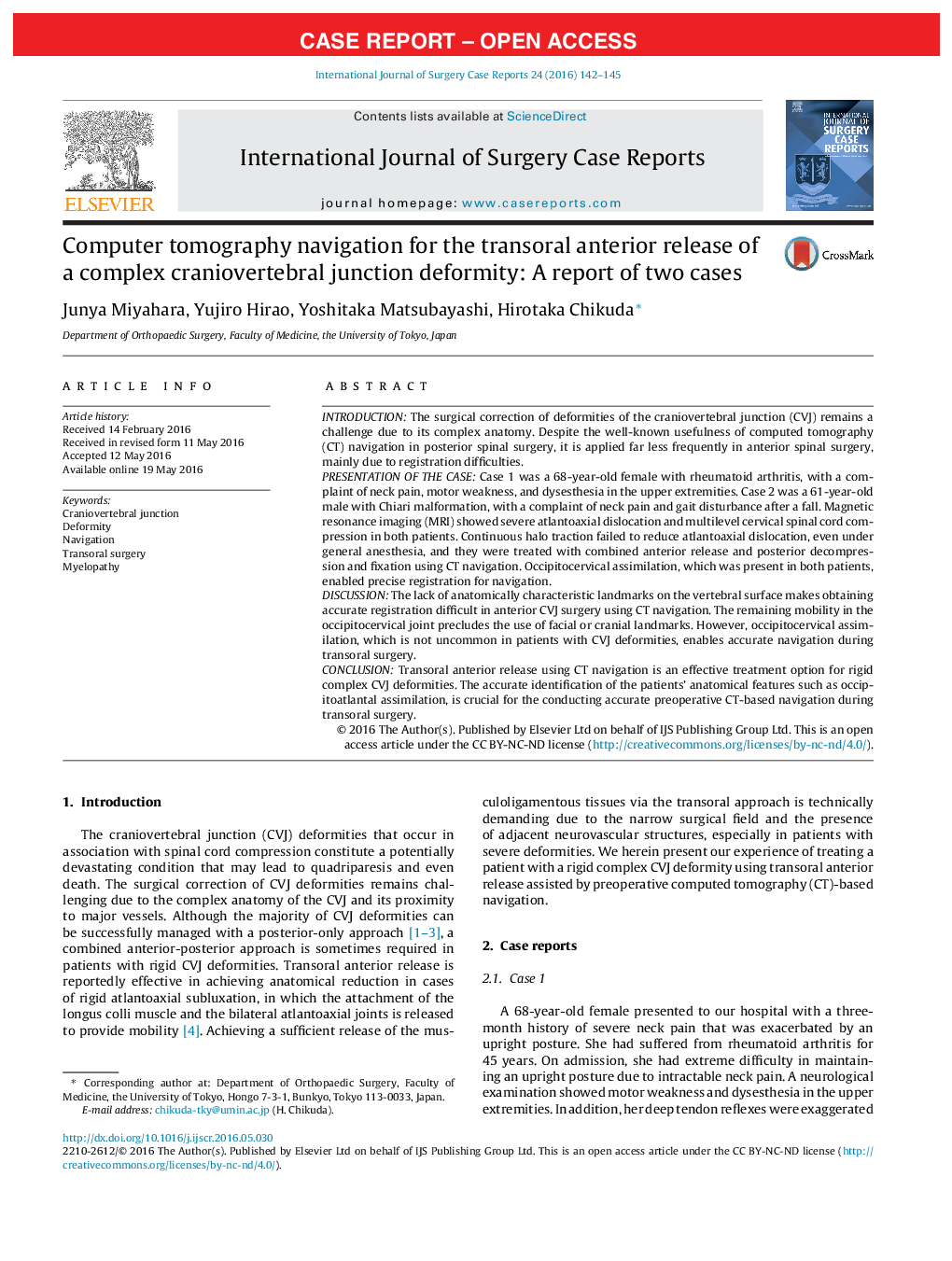| کد مقاله | کد نشریه | سال انتشار | مقاله انگلیسی | نسخه تمام متن |
|---|---|---|---|---|
| 4288267 | 1612090 | 2016 | 4 صفحه PDF | دانلود رایگان |
• The surgical correction of the deformities of the craniovertebral junction (CVJ) remains a challenge due to its complex anatomy.
• A combined anterior-posterior approach is sometimes required, especially in patients with rigid CVJ deformities.
• Transoral anterior release assisted by CT navigation can be a safe and effective treatment option for rigid complex CVJ deformities.
• The identification of the patients’ anatomical features such as occipitoatlantal assimilation is crucial for accurate navigation.
IntroductionThe surgical correction of deformities of the craniovertebral junction (CVJ) remains a challenge due to its complex anatomy. Despite the well-known usefulness of computed tomography (CT) navigation in posterior spinal surgery, it is applied far less frequently in anterior spinal surgery, mainly due to registration difficulties.Presentation of the caseCase 1 was a 68-year-old female with rheumatoid arthritis, with a complaint of neck pain, motor weakness, and dysesthesia in the upper extremities. Case 2 was a 61-year-old male with Chiari malformation, with a complaint of neck pain and gait disturbance after a fall. Magnetic resonance imaging (MRI) showed severe atlantoaxial dislocation and multilevel cervical spinal cord compression in both patients. Continuous halo traction failed to reduce atlantoaxial dislocation, even under general anesthesia, and they were treated with combined anterior release and posterior decompression and fixation using CT navigation. Occipitocervical assimilation, which was present in both patients, enabled precise registration for navigation.DiscussionThe lack of anatomically characteristic landmarks on the vertebral surface makes obtaining accurate registration difficult in anterior CVJ surgery using CT navigation. The remaining mobility in the occipitocervical joint precludes the use of facial or cranial landmarks. However, occipitocervical assimilation, which is not uncommon in patients with CVJ deformities, enables accurate navigation during transoral surgery.ConclusionTransoral anterior release using CT navigation is an effective treatment option for rigid complex CVJ deformities. The accurate identification of the patients' anatomical features such as occipitoatlantal assimilation, is crucial for the conducting accurate preoperative CT-based navigation during transoral surgery.
Journal: International Journal of Surgery Case Reports - Volume 24, 2016, Pages 142–145
